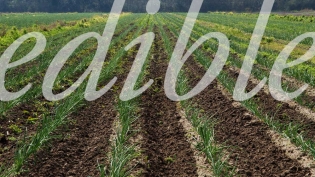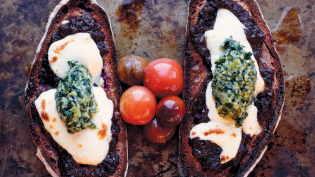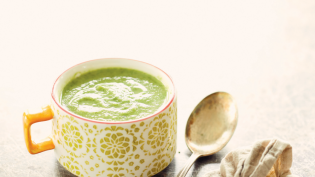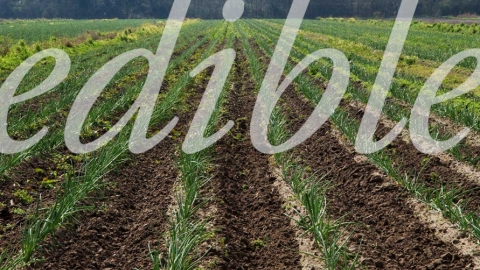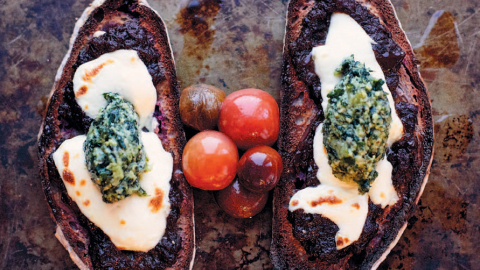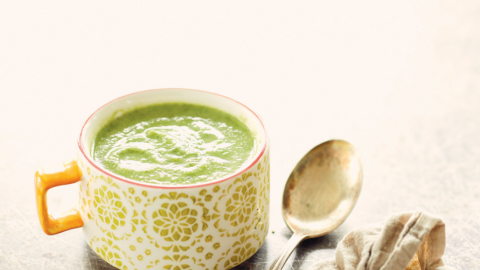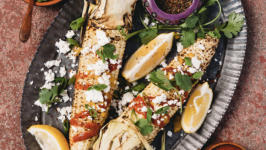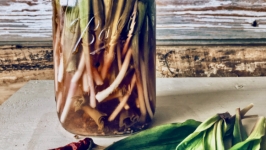From the Forest to the Plate
Violets. Ramps. Morels. Dandelion greens.
When you’re a forager, come springtime these names evoke joy. The season offers plenty. Gathering wild foods for the home kitchen or local restaurant has moved beyond trend status. It’s a veritable lifestyle now embedded within the local food movement. Martha Stewart even has a favorite wild green: chickweed.
Foraging is shifting our consciousness about where our food really does come from. Along with looking primarily to cultivated crops and the farmers who grow your carrots or kale within a 100-mile radius, foraging reveals a second source: the forest floor near you. Wild edibles are organic, nutritious and, obviously, in season. And chefs all over the world are leading the charge, looking to these woody places for the essence of fresh, inspired ingredients to take your burger or alfredo sauce to the next level for both flavor and health.
City Plums
Here in Indy, urban farmer, enthusiastic cook and advocate Jason Michael Thomas is most at home where nature meets food. Founder of the Indy Gourmet Club and the Urban Awareness Gardens on his home property downtown near 16th and Central, he’s committed to educating people about “something that is even more local” with food that can be grown or foraged right in your backyard. Jason sells his produce to restaurants like Tinker Street, Thunderbird, Bluebeard, Shoefly Public House, Spoke & Steele and Plat 99.
“All these great chefs really support us and get behind us. That’s really what we want to do,” he says when talking about his urban farm and his partner, Casey Kay, who farms and forages with him, “promote that lifestyle and promote preparing amazing food with amazing local farmed and foraged ingredients.”
He started foraging by noticing what was growing all around, even in the city. “Years ago, I would go jogging through downtown in these completely urban areas,” he recalls. “There was a plum tree I used to run by on Washington Street. To me, if that was my tree, I would have collected every single one of those plums and done something with them.”
In spring, Jason is drawn to everything budding, vermillion and edible. Last year, he discovered the delicious, green-beany flavor of maple blossoms. And while he loves to harvest ramps (and leave some for later), he’s also cooked with unlikely suspects like the little blossoms off the redbud trees and Virginia bluebells.
We talk about how wild greens are great served fresh in salads and as pesto. This spring, though, Jason plans to experiment with a ramp kimchi and preserve the flavor so he can savor it into the year.
Foraging for Wellness
Chef Daniel Orr, author, chef and owner of FARMbloomington in Bloomington, Indiana, is in favor of preserving foraged ingredients, too. We talk ramps.
“When we get a large volume, we’ll pickle the bottom part, which are this kind of beautiful red violet color with an onion white bulb. And then you have these big, palm-like leaves on the top. We make a pesto with the leaves and pickle the bulbs, and then we can use those for months,” he says. “We serve the pickles with pâté. They are good with a lot of rich, fatty meats like local country hams, liver and sweetbreads. And the ramp pesto is good with homemade bread, Capriole Farms goat cheese, pizzas and pastas.”
Talking with Chef Daniel is like walking through his farm and then sitting down together for lunch. We’re both salivating for spring foods. He describes the edible landscape on his property in Columbus on Harrison Lake, where he has plots for wild plants, like ramps, as well as cultivated produce. He’s even growing hazelnut trees that are inoculated with truffle spores. “We hope to have Périgord black truffles in the next few years,” he says.
He also treks to his neighbor’s property across the street to forage. They have over 15 acres of wild forest. “I sometimes find wild strawberries— the little tiny fraise des bois.”
It’s on his second property in Monroe County where he hunts for mushrooms. He finds between 10 and 15 different varieties each season while also growing his own shiitake and oyster mushrooms. Chef Daniel is certified with the Hoosier Mushroom Society (HMS—see article on page 17) so he can legally bring his foraged mushrooms to FARMbloomington for the spring menu and also procure mushrooms from other foragers and help them sell them back into the market by certifying the mushrooms they’ve foraged are 100% safe to eat.
Deft and inspiring as a chef, it’s his love of the nexus where nature meets food that makes Chef Daniel’s ideas for foraged foods and meals so exquisite. He understands the legacy of wild foods in Indiana, the unique flavors in foraged foods, what our ancestors ate, including Native Americans, what we’ve lost and how to reclaim it for enhanced living and wellness.
“Every vegetable was a wild, foraged item at one time,” he says. “Human beings have changed those vegetables to become sweeter, more starchy, larger and less seedy. So the vegetable we’re now buying in the grocery store is a far cousin from its original foraged cousin. For example, if you think of the original wild apples that grew in Eastern Europe, they were these gnarly, sour, almost quince-like, puckery creatures that modern man has developed into these beautiful, succulent, sweet juicy fruits that we think of today.”
With wild foods, “You’re eating items that have much more nutritional value to them,” he says. “And if you’re harvesting them or foraging them in a clean, sustainable way and in an environment that’s organic, then they’re much healthier than mass produced, hybridized, GMO foods available in the big-box stores.” We all need good nutrition, healthy social interactions, time outdoors and intellectual stimulation to truly live well, and foraging provides all of it, in spades. “You can hit a lot of different areas in your wellness chart,” he says, “by bringing foraging into your life.”
Let the Mushroom Find You
“It is the healthiest food on earth,” says Summer Cooper, farmer turned forager. “A simple online comparison of nutritional data will show you how far and away superior these wild foods are.”
Romanced into foraging by the love of the hunt, and her innate skills, Summer forages wild edible and sells them directly to chefs and restaurants. She is also certified by the HMS and considers mushrooms her specialty.
“When I was a beginner, to find something was the most exciting thing,” she remembers. “The thrill of the chase, the excitement of the hunt. And it can be so awful when you’re not finding anything, especially when you’re starting out, because you don’t know how much the weather affects mushroom hunting.”
In the spring before morels even emerge, Summer will look for mushrooms like wild enoki, because they like a little bit of colder temperatures, usually growing off of dead elms. She’ll also hunt for a medicinal mushroom called split-gill polypore.
“It’s so special to go out and get something wild like that, especially something that is not available all the time,” she says.
One of her favorite foraged spring recipes is Nettle Soup (see page 26). And while she loves the taste of forest- grown foods, she also hunts for the medicinal properties in the wild plants. When foraging, she advises, trust that the mushroom or plant that you need to find will find you, like a sign from the earth of what your body needs for balance.
“People love it,” she says. “It’s a knowledge that we’ve lost. And it’s a sad loss, especially with so many people going hungry in the United States. It’s crazy to me that there’s food growing in ditches and people don’t know how to feed themselves.”
“I really think we’re part of this organism and it’s alive. The earth is alive. The soil is alive. And the soil knows what it needs to heal,” Jason says. “I think many times local foods are best suited for the people who live there, because they will be nourished by those foods more so than the ones that are imported because they’re attractive or we like them. Foraging reminds me of my place in the world. We’re part of a much larger thing that is growing all around us.”
Jason Michael Thomas makes his version of Indiana Garlic Mustard Pesto featuring foraged ingredients served on toast with vegetables from the farm. He will host a Spring Forager’s Feast with the Indy Gourmet Club on Sunday, April 8. This recipe, other foraged items, and farm-to-table delights will be served exclusively to members of the club. For details about membership, private farmto-table dinners and classes email Jason at urbanagindy@gmail.com, or find him on Instagram at jasonmichaelthomas.






